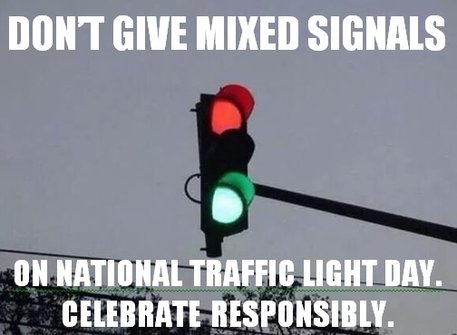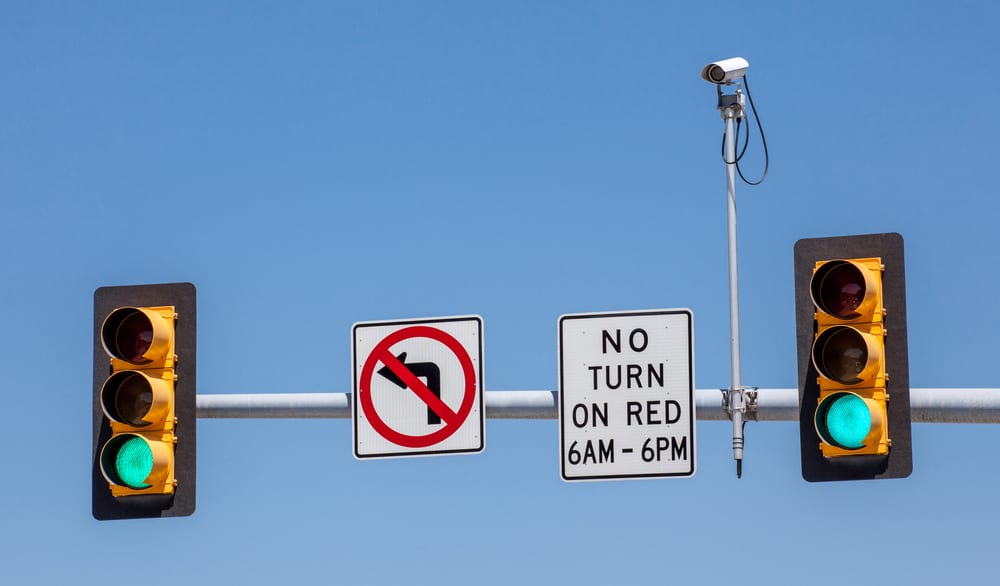Have you ever wondered why the traffic signal lights are red, yellow and green in color??? Yes, the system has been around for quite a while but why were those 3 colors chose?? By doing a bit of research I found out some information I have to simply share
The colors of red, yellow and green have been used by the railroad industry since the 1830s. Railroad companies used the lights to let train engineers know when to stop or go. Different lighted colors represented different actions. Red had come to indicate danger by nature so it only made sense to choose it to let trains know when to stop. However, in the beginning the color to go was white and green was the color to be cautious.
The white light did not work out so well as any reflection could change the color of light a bit. SO the color was changed to green and yellow was picked up as a signal to be cautions. So that is how the lights were distinguished for the railroad system but how did the signals become useful for the road??
England was a bustling place and in London the traffic became a larger problem. In 1865 an issue with horse drawn traffic and the possibility of it causing danger to pedestrians crossing the roads led to a desire for an organized system. John Peake Knight a railway engineer specialized in the British signaling system for the railways. To him it only made sense to use a lighted system for road traffic. There was all ready a system in place that used arm or arms raised and lowered by a police officer to notify carriages when to stop. However, at night the system could not be seen and the traffic lights of red and green could help tell drivers to stop or go.
On December 10th, 1868 the first traffic light system was put into place. It was located near Parliament at the junction of Great George and Bridge street in London. The system performed well, however a problem with a gas line that helped supply the leaps began to leak and led to a police officer getting burned. This led to the new traffic lights being dropped in England. However, the United States were placing towers on the streets to have street patrol officers to watch traffic and used traffic lights to guide traffic.
William Potts a policeman in Detroit Michigan in 1920 developed a three color traffic signal. The colors chosen were red, green, and yellow based on the railway system, traffic lights. The three light system would not be the last tweak to the traffic light system. Inventors would come up with signals as well as how to operate the system. Finally in 1920 the traffic signal system became "automatic"
The first automatic traffic signals was time specific. This meant that some cars were stopping when there were no other cars on the road. Charles Adler J. invented a signal that detected a vehicle's horn honking to change the light. This to me brings up all sorts of thoughts of just what could have happened. However, Adler had thought about this as well and created the light to only change once and when the light changed it would not change again for a few seconds.
The honking got the attention of not only the light but those around as well. It was often and annoyance to many. Henry Haugh was the next to invent a system that sensed pressure. A passing car would push the two strips together, allowing the light to change and the car to go. With some stop lights held the honking turn signal and others the pressure system confusion resulted. In 1935 the Federal Highway Administration created "The Manual on Uniform Traffic Control Devices" All traffic signals were uniformly set with road signs and pavement markings and stated that the system of red, yellow and green light indicators were to be used.
Modern light systems operate via use of lasers, rubber tubes filled with air to sense pressure, or the inductive loop. The inductive loop works through a magnet being placed underground in the road below the signal. These signals have come a long way from the police officer traffic signals of red and green with a whistle for caution.
retweet post here
shared on these blog hops, parties and linkups
traffic jam
shared at these facebook group linkups
Blog and Social Media CT --- 1/8
shared at these facebook group linkups
Blog and Social Media CT --- 1/8







No comments:
Post a Comment
I love comments so if you have a minute leave me your thoughts on the above post